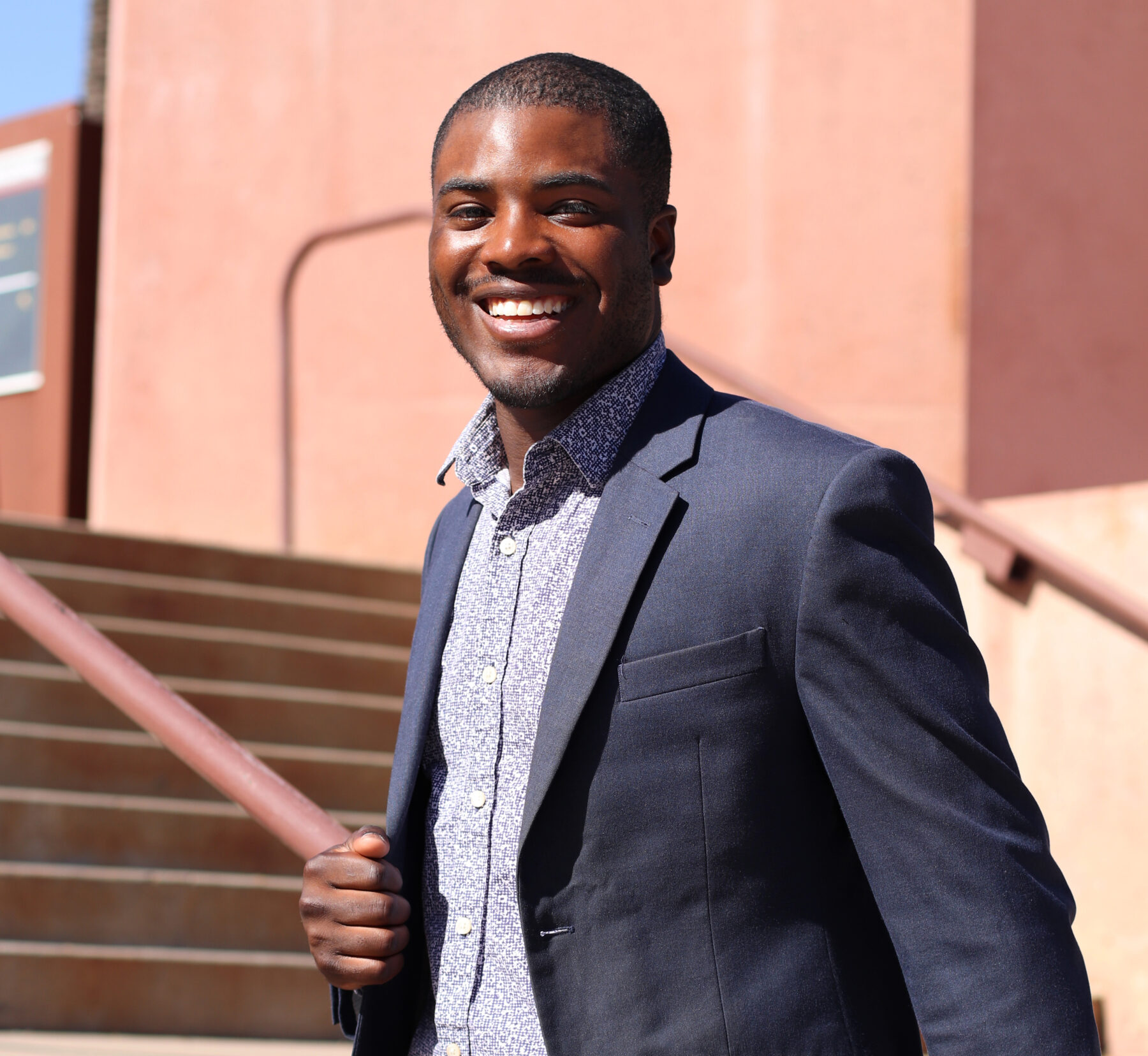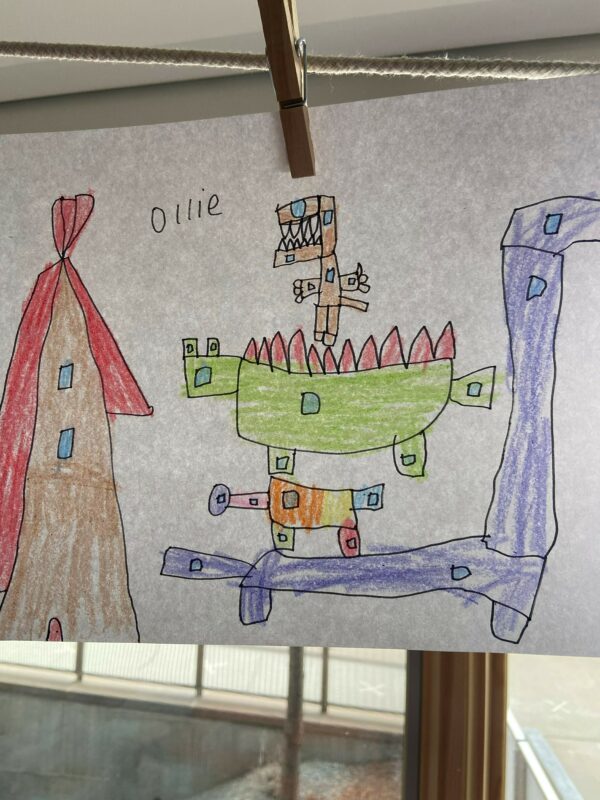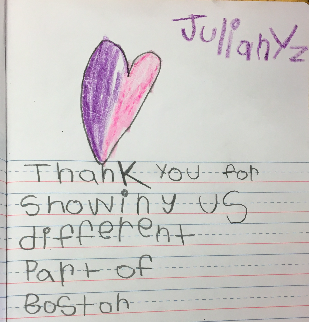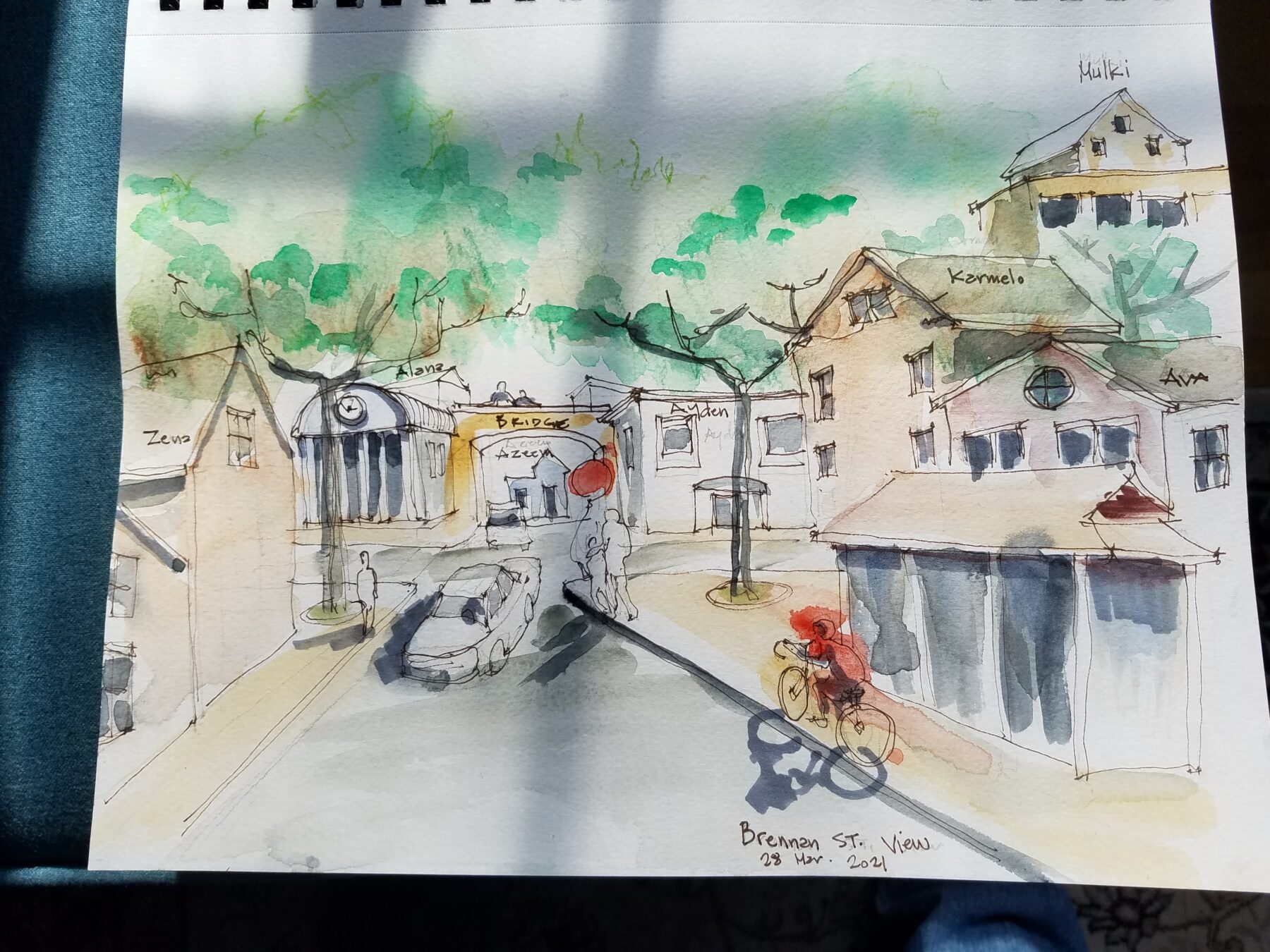Emeka Ukaga

Architectural + Structural Designer II at Michael Baker International
Degrees:
Bachelor of Science in Civil Engineering, University of Pittsburgh
Bachelor of Architecture, University of Pittsburgh
Masters of Science in Sustainable Engineering, Arizona State University
Master of Architecture, Boston Architectural College ('22)
Professional interests:
Sustainable engineering, green architecture, community-based design, volunteering
When did you first become interested in architecture as a possible career?
I fell in love with building things from a young age. I'd spend hours playing with Legos, and it was from this initial hobby that my eventual love for architecture was born. I always had a dream to both design and also help build structures as both an architect and engineer, but it wasn't until middle school, while doing career research, that I fell in love with the actual profession versus just the idea of things. I loved how architects have the ability to support communities, build structures that will impact people, cities, and individuals' memories, and create things that will last for lifetimes. This ability to contribute to the human family in a way that outlived and was so much greater than me was profound.
Who or what deserves credit for your success?
I believe I am a product of all the work my parents, teachers, professors, loved ones, and instructors poured into me. Some key individuals that stand out are definitely my parents, siblings, Prof. Oyler, Dr. Sanchez, and Dr. I at the University of Pittsburgh.
Has your career taken you anywhere you didn’t expect?
I've been able to work on a lot of healthcare and education-related projects in my career thus far. When I became interested in architecture I wanted to design homes and hotels. Those seemed to be the most fun, and I loved the idea of working with an individual to realize their dream for their business or house. But working on healthcare and education-related projects has forced me to look beyond the single owner purchasing the project and to really understand the impact the building will have on a community, as well as how the individuals or students that will occupy the designed space on a day-to-day basis could be best-served.

Drawings by young students in a virtual learning program the BSA conducted with Boston Public Schools in May 2021, at which Ukaga was a volunteer and teacher.

What has been your most proud moment as an architect/designer?
One of the proudest moments thus far in my career was when I passed my professional engineer exam, and also when I completed the Architecture Experience Program. Both these milestones marked points towards the end of my pursuit of becoming a licensed architect and engineer, and they helped me realize the progress I'd made.
When I got to see construction begin on the first architecture project I designed and oversaw on my own, it was an amazing feeling as well. Getting to see drawings you created become a real-life structure is an amazing feeling.
What do you see as the largest barrier to equity in your profession?
I believe the largest barriers to equity in the architecture profession are exposure and systemic bias. If we want more diverse voices in our field, we have to ensure that from a young age, as many children from as many diverse backgrounds as possible are exposed to the architectural profession. If they never see one or understand what an architect does, then there is no chance they can ever hope to pursue that career in the future.
Studies from NCARB, the AIA, and NOMAS have shown time and time again that women are equally as likely or more likely than men to pursue licensure or enroll in NAAB accredited programs, but only 17% of architects are women. Data has also shown that minorities often find it harder to find mentors at their jobs early on in their careers, yet unpaid internships often prevent many young students from getting early experience in the profession while prioritizing and supporting students who are from wealthier families, placing richer students at a slight advantage over their peers by graduation.
We have to find a way to design our profession in a way that does not force interested future architects to feel pushed down or put at a disadvantage due to their economic, gender, racial, etc. status.
What do you see as the largest barrier to a zero-waste building, city, and world?
I believe the biggest barrier is binding commitments from lawmakers. In order for a building to be zero-waste, it takes planning and infrastructure way beyond the scope and zip code of the final building.
Support from lawmakers can help create environments where this is more conducive, but without that support, zero-waste cities or a zero-waste world will not be achievable.

What is the greatest potential for architecture to shape a neighborhood community?
While architects are great at taking in historical, regional, environmental, economic, and social data and formulating it into creative and insightful designs, the individuals that understand the needs of their built environment the best are the ones who will inhabit it.
Community-based design that incorporates active participation from community members in the design, ideation, and construction of structures provides architects with a unique ability to collaborate with residents to create more engaging, insightful, and fulfilling architecture.
Where do you find inspiration?
Humanity and nature. Seeing empathy displayed to others as well as to the rest of the planet is inspiring. Life has been around for over 3.8 billion years, and there is much to learn as well as appreciate from that.
What are you reading right now?
Contingency, Irony, and Solidarity, When Breath Becomes Air, and The Richest Man in Babylon.
If you could redesign anything, what would it be?
How our society deals with punishment/atonement for wrongs. We all know that as individuals we are not perfect, but oftentimes we do not offer the same forgiveness or understanding we afford ourselves to others. The famous quote is “We judge ourselves by our intentions and others by their behavior.”
I often am shocked by how hard it is for public figures to admit when they've made mistakes and how unforgiving we've become as a society. I believe this impacts us on a social level as well and affects how we design our prisons, how we raise our children, and how we prioritize our government funding.
As a student, I was taught that good design is almost invisible—it should make doing things so simple and appealing that one doesn't even realize the process was designed. If I could find a way to design our modern global society with more empathy, I think that is what I'd try to achieve. How to do that with our architecture—now, that is a question which may take a lifetime to answer!
If you could sum up your outlook on life in a bumper sticker, what would it say?
Invest in humanity... we're all each other's got. 😄

